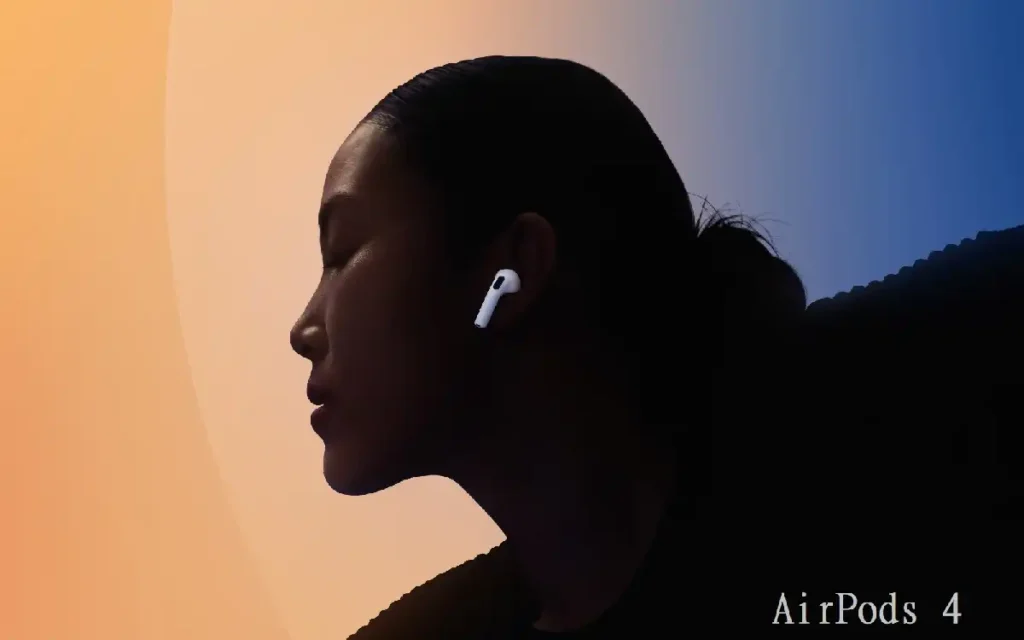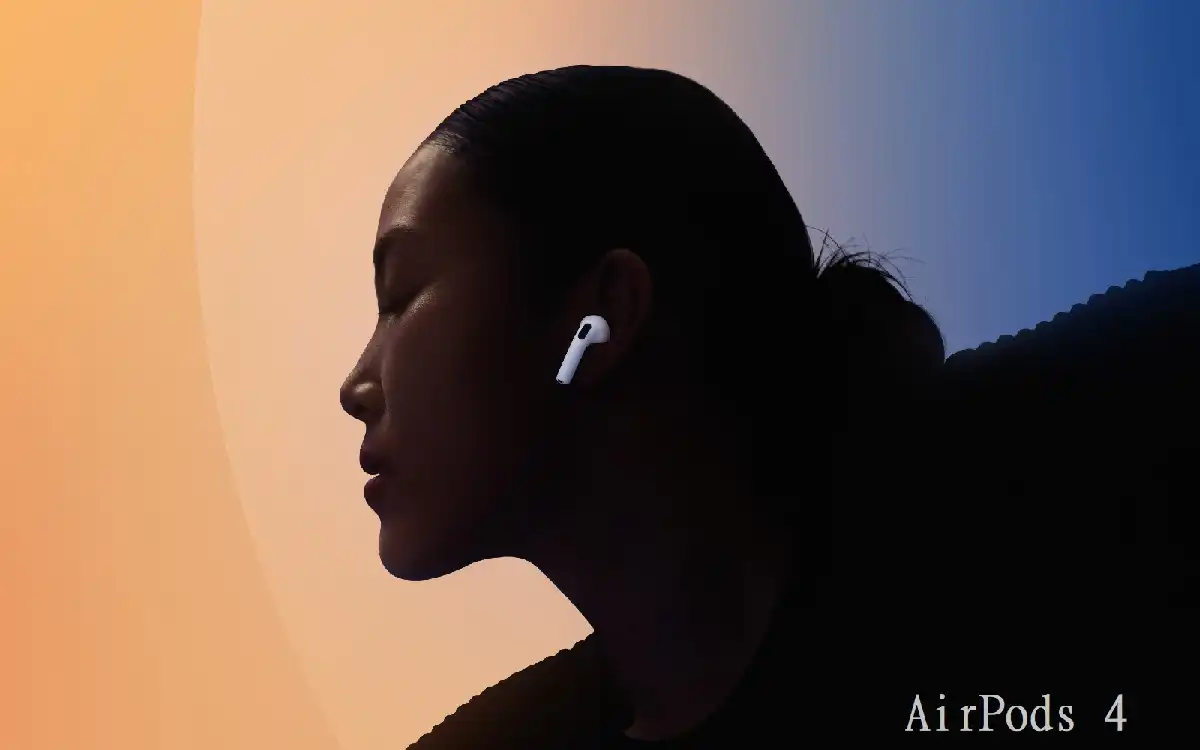Apple has once again raised the bar with the release of AirPods 4. This latest iteration brings significant upgrades and refinements, setting a new standard for what users can expect from compact audio devices. From enhanced sound quality to the introduction of active noise cancellation in the standard AirPods line, the AirPods 4 represents a leap forward in Apple’s audio technology. We are discussing the basic features, improvements, and how they stack up against previous generations, helping you decide if it’s time for an upgrade.
Recent Released: Is There Any Novelah iOS App for iPhone users?
Introduction: The Evolution of AirPods
Since their initial release, AirPods have revolutionized the wireless earbud market, becoming a ubiquitous accessory for Apple users worldwide. Apple has introduced incremental improvements with each generation, but the AirPods 4 marks a more substantial leap in features and performance. As we delve into the details of this new release, we’ll examine how Apple has addressed user feedback, incorporated cutting-edge technology, and refined the overall AirPods experience.
Design and Comfort: A New Level of Ergonomics

Refined Shape for Better Fit
The AirPods 4 showcases Apple’s commitment to user comfort with a reimagined design. Unlike the more rounded shape of their predecessors, these new earbuds feature a flatter, slimmer profile engineered to fit more naturally in the ear. This design change isn’t just about aesthetics; it’s a functional improvement to address one of the most common complaints about previous models: fit security.
Key Design Changes:
- Flatter, more ergonomic shape
- Narrower profile to accommodate a wider range of ear sizes
- Improved weight distribution for enhanced stability
Users upgrading from AirPods 2 or 3 will immediately notice the difference. The new design allows the AirPods 4 to sit more flush with the ear, reducing the risk of falling out during movement or exercise. It is particularly beneficial for users who found previous generations too loose or prone to slipping.
Comfort for Extended Wear
One of the most significant improvements reported by early adopters is the ability to wear AirPods 4 for extended periods without discomfort. While the AirPods 3 were comfortable for many, some users experienced fatigue after a few hours. In contrast, AirPods 4 users report being able to comfortably wear them for extended periods, with some even noting they can watch a full-length movie (around four hours) without discomfort.
This enhancement in long-term comfort is crucial for users who rely on their earbuds throughout the day, whether for work calls, podcast listening, or enjoying music and videos.
Enhanced Durability and Protection
Apple has also improved the durability of the AirPods 4, addressing another area of concern for many users. The new model boasts an IP54 rating for dust and water resistance, a step up from the IPX4 rating of the AirPods 3. It means improved protection against sweat and light water exposure and added resistance to dust particles.
This upgrade provides additional peace of mind and potentially extends the device’s lifespan for active users or those who frequently use their AirPods in varied environments.
Sound Quality: A Leap in Audio Fidelity

New Low-Distortion Driver
A newly designed low-distortion driver is at the heart of the AirPods 4’s audio improvements. This technological advancement significantly enhances sound quality, delivering a more balanced and detailed audio experience.
Key Sound Improvements:
- Deeper, more pronounced bass response
- Clearer highs and improved vocal clarity
- Better instrument separation and soundstage
Users upgrading from AirPods 2 will notice a dramatic improvement in audio quality. The difference is less stark when compared to AirPods 3 but still noticeable, particularly in the bass response and overall clarity.
Personalized Spatial Audio: A Tailored Listening Experience
One of the standout features of the AirPods 4 is the introduction of Personalized Spatial Audio. This technology takes the spatial audio capabilities introduced in previous models to a new level by customizing the audio output based on the unique shape of each user’s ears and head.
How Personalized Spatial Audio Works:
- Uses the TrueDepth camera on compatible iPhones to scan ear and head shape
- Creates a custom audio profile optimized for the individual user
- Applies dynamic head tracking to maintain audio positioning as the user moves
The result is a more immersive and realistic audio experience, particularly noticeable when watching movies or playing games. Sounds come from specific directions around the user, creating a three-dimensional audio environment that enhances engagement with content.
Active Noise Cancellation: A First for Standard AirPods
The most significant upgrade in the AirPods 4 is the introduction of Active Noise Cancellation (ANC). Previously only available in the higher-end AirPods Pro models, ANC is now an option in the standard AirPods line, albeit at a slightly higher price point.
The ANC in AirPods 4 effectively reduces background noise, allowing users to enjoy their audio content in noisy environments without increasing the volume to potentially harmful levels. This feature is particularly beneficial for commuters, office workers in open spaces, or anyone frequently in noisy surroundings.
Connectivity and Smart Features
USB-C Charging Case
In line with Apple’s gradual transition to USB-C across its product line, the AirPods 4 come with a USB-C charging case. This change brings several benefits:
- Compatibility with a wider range of charging cables and devices
- Potential for faster charging (when used with compatible power adapters)
- Alignment with current and future Apple products
Enhanced Find My Integration
The charging case of the AirPods 4 now includes a built-in speaker, making it easier to locate using the Find My app. This small but significant addition addresses a common pain point for AirPods users who occasionally misplace their case.
Improved Controls
The AirPods 4 features a new force sensor on the stems, providing more intuitive and reliable controls for playback, calls, and activating Siri. It represents an upgrade from the tap controls of earlier generations, offering more precise interaction with fewer accidental triggers.
Comparative Analysis: Is It Time to Upgrade?
To help you decide whether upgrading to AirPods 4 is worthwhile, let’s compare them to previous generations in a concise table:

| Feature | AirPods 2 | AirPods 3 | AirPods 4 |
| Design | Original stem design | Shorter stems, more rounded | Flatter, more ergonomic shape |
| Sound Quality | Good | Very Good | Excellent, with new low-distortion driver |
| Active Noise Cancellation | No | No | Yes (in higher-priced model) |
| Spatial Audio | No | Yes | Yes, with personalization |
| Water Resistance | None | IPX4 | IP54 (dust and water) |
| Charging Case | Lightning | Lightning | USB-C |
| Battery Life | 5 hours | 6 hours | 6+ hours (estimated) |
| Price (Base Model) | $129 | $169 | $129 |
Upgrading from AirPods 2
For AirPods 2 users, the upgrade to AirPods 4 represents a significant leap in almost every aspect. The improvements in sound quality, comfort, and features like ANC and Spatial Audio make this a compelling upgrade, especially considering the similar price point of the base model.
Upgrading from AirPods 3
The decision is less straightforward for AirPods 3 owners. While the AirPods 4 offers noticeable improvements in fit, sound quality, and the option for ANC, these enhancements may only justify the cost for some users. If you’re satisfied with your AirPods 3 and don’t need ANC, consider waiting for the next generation.
Finally
The AirPods 4 represent a significant step forward in Apple’s wireless earbud technology. Apple has created a product that offers substantial improvements over its predecessors by addressing key user concerns such as fit and sound quality while introducing features like ANC and Personalized Spatial Audio.
For users of older AirPods models or those new to the ecosystem, the AirPods 4 presents an attractive option that balances advanced features with the simplicity and integration that Apple products are known for. The improved comfort for extended wear, enhanced sound quality, and the addition of ANC make these earbuds suitable for a wide range of use cases, from casual listening to professional use in video calls and content consumption.
While the decision to upgrade will ultimately depend on individual needs and preferences, the AirPods 4 make a strong case for themselves, especially considering the competitive pricing of the base model. As wireless audio technology continues to evolve, the AirPods 4 set a new benchmark for what users can expect from compact, feature-rich earbuds.
Whether you’re a long-time AirPods user looking to upgrade or someone considering entering the Apple ecosystem, the AirPods 4 offers a compelling package combining innovative technology with practical improvements. As we move forward, it will be interesting to see how competitors respond and what future iterations of AirPods might bring to enhance our audio experiences further.






